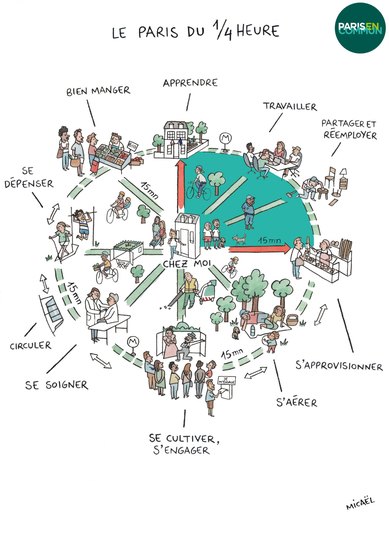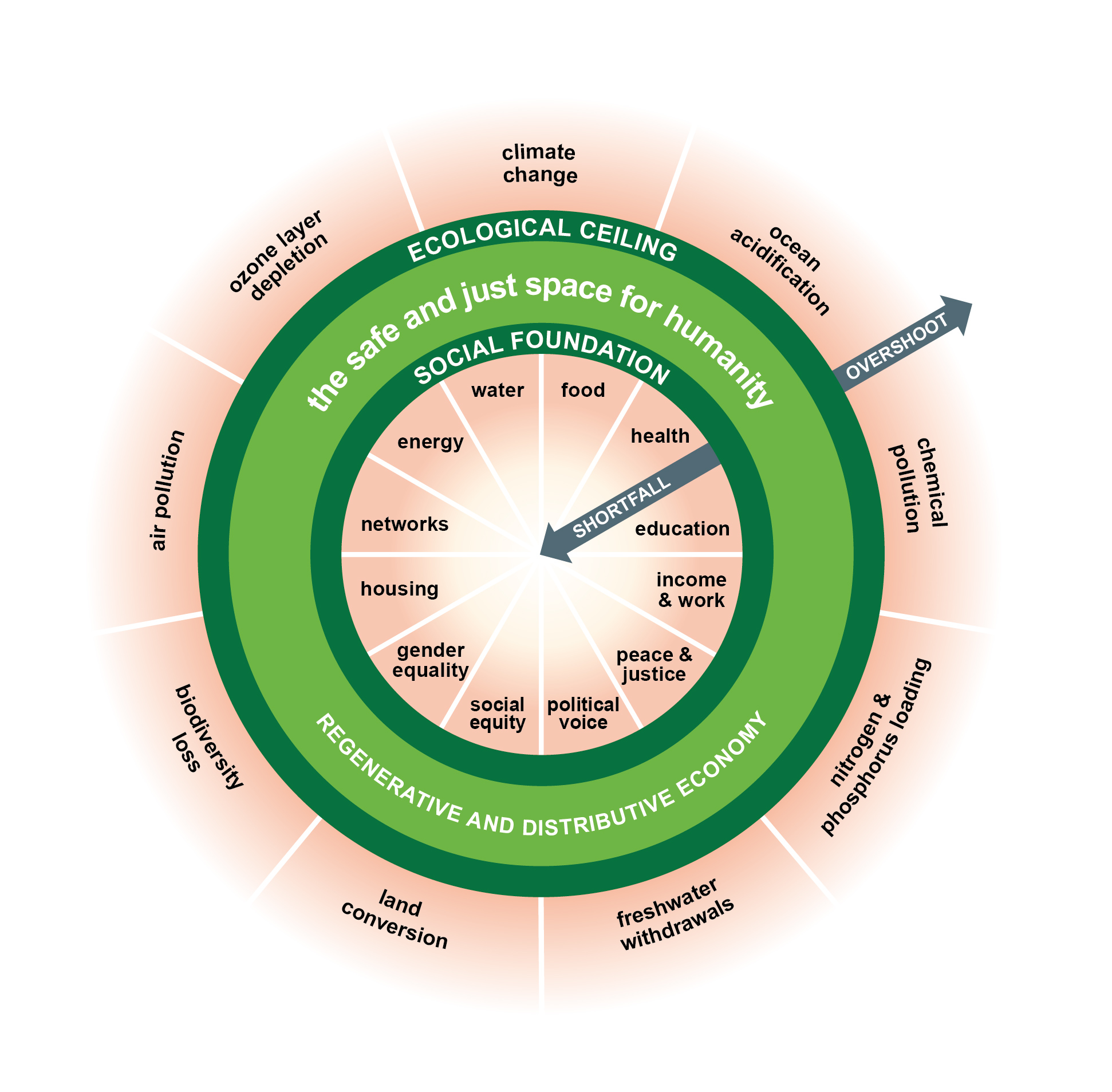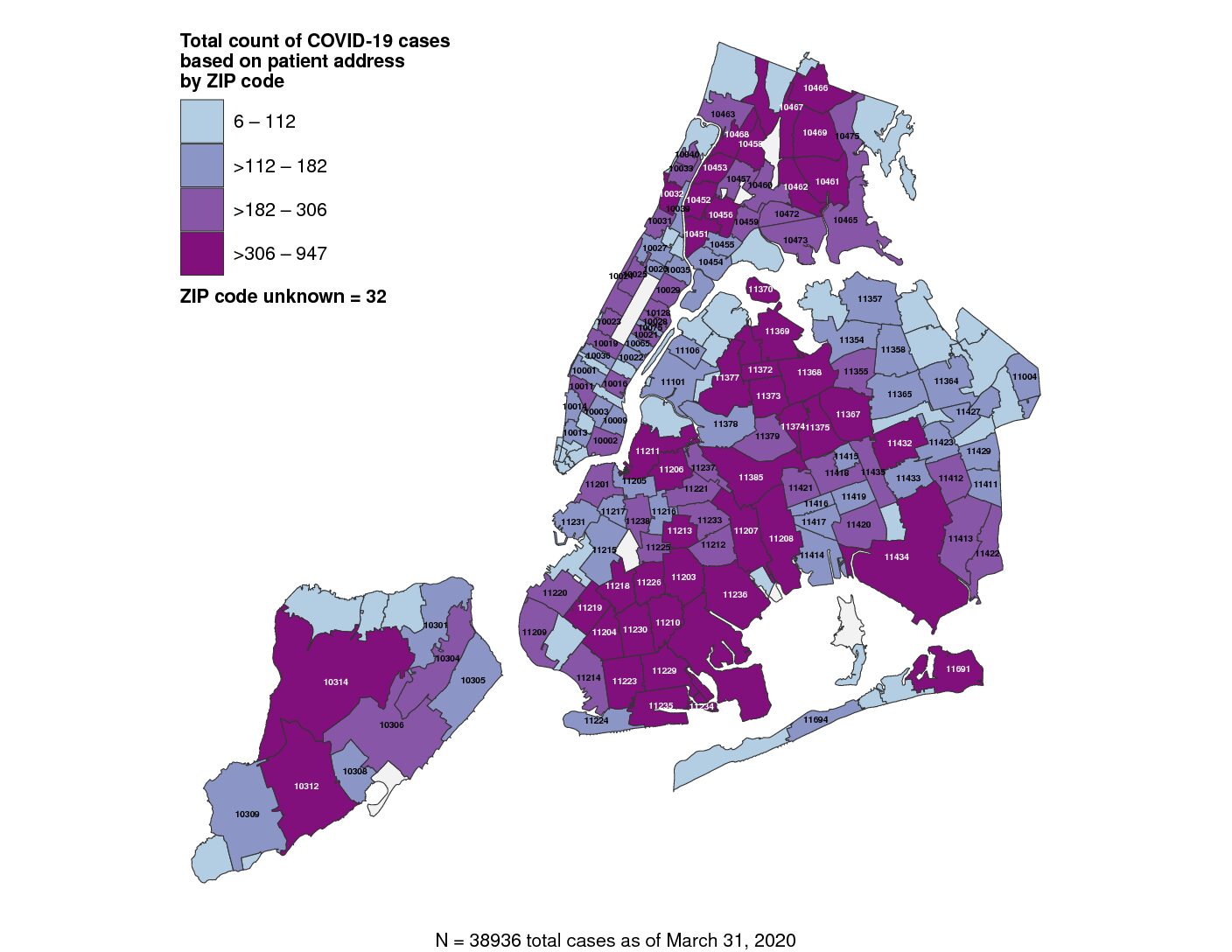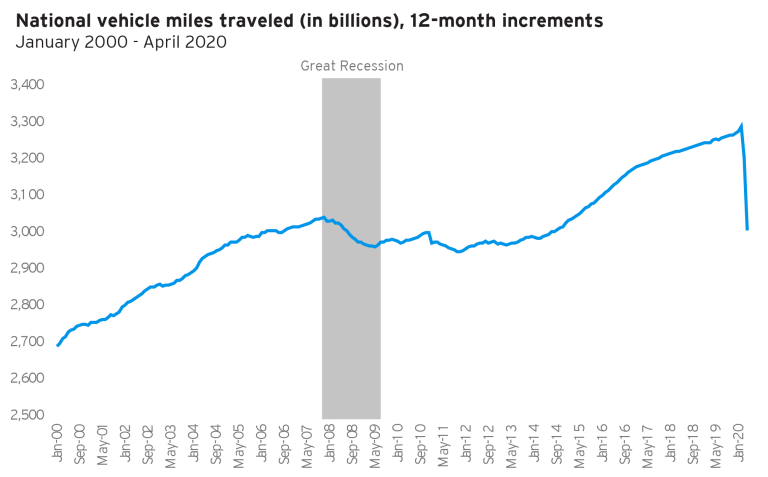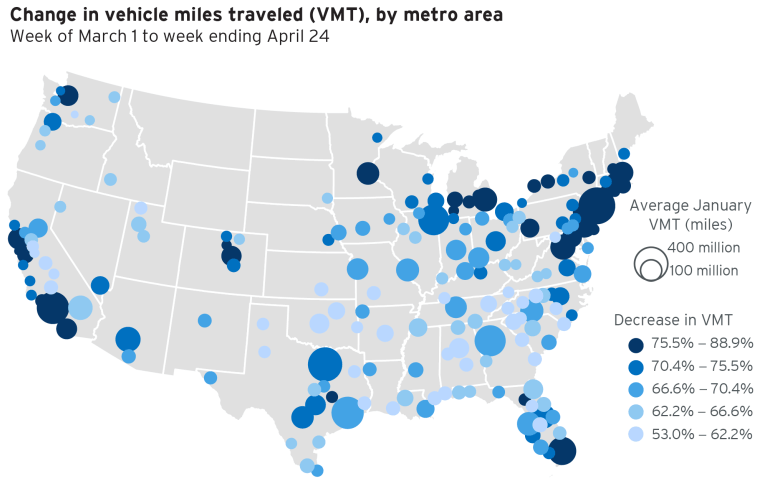Cities at the Front Line: Public Space in the Time of the COVID-19 Pandemic
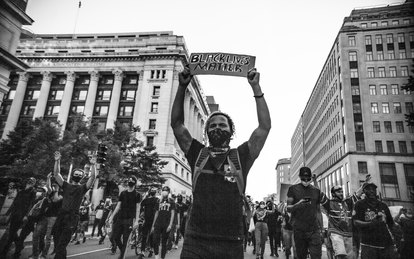
Black Lives Matter Protest - Washington, D.C., Yash Mori CC BY
Cities are the centers of creativity, capital and connection. They are also at the front line of our current crisis. The COVID-19 pandemic shut down our cities. Streets and public spaces became silent and activity ceased with astonishing speed. Mass protests over structural racism have swept through our streets and public spaces. Together, they have radically transformed our current reality.
The global lockdown may be the single largest collective act that humanity has undertaken. A staggering 81% of the global workforce is affected. More than 36 million Americans have filed for unemployment. Those hardest hit have been the most vulnerable: essential frontline workers, immigrants, the elderly and communities of color. Acute underlying problems in cities that have existed for a long time have been brought into sharp focus. At the same time, we are also offered a glimpse of a future where the city could look quite different.
In thinking about how cities can evolve for the better after this crisis, five factors affecting public space are crucial to consider—Infrastructure, Evolution, Density, Mobility and Equity.
Public Space is Essential Infrastructure:
Our public spaces must be understood as an essential infrastructure and leveraged to support public health. Landscape architect Frederick Law Olmsted, who worked for the United States Sanitary Commission (a precursor to the Red Cross), understood this all too well. His designs for Central Park in New York, Jackson Park in Chicago and the Emerald Necklace in Boston bear testament to the powerful link between health, well-being and accessible public open space.
The value of public space is being brought to light during this pandemic, together with a renewed appreciation. In addition to the public health and environmental benefits, it can reduce socioeconomic segregation, build trust and reduce social isolation. The economic crisis brought upon by the pandemic is raising discussions about publicly funded infrastructure projects. These projects define infrastructure in a traditional way, such as dams, bridges and roads. It is time for the very notion of infrastructure to be redefined and expanded to include public space.
Cities Evolve After Crisis
Cities have exhibited the capacity to evolve after crises time and again. Without the devastating outbreak of cholera in the 19th century, a new modern sewer system may not have been developed. The tuberculosis epidemic in New York in the early 20th century led to improved public transit systems and new housing regulations. The Great Fire of London in 1666 led to the creation of the city's first planning controls, including wider streets and thicker common walls between buildings to slow the spread of fire. If we want our cities and our public spaces to evolve and come out of this crisis stronger, our city leaders, architects and urban planners need to think differently. And many have already started to do so.
Some cities are making changes in their physical environment. In London, the Mayor’s Streetspace Plan will fast track the transformation of streets to enable millions more people to walk and bike safely. Early modeling has revealed there could be a ten-fold increase in kilometers cycled and up to five times the amount of walking, compared to pre-COVID-19 levels. Bogota added 72 miles of bike lanes to its robust biking network. Oakland’s “slow streets” initiative will set aside up to 10% of the city’s streets for recreation. San Francisco has also launched a "slow streets" program.
We are also seeing how some cities are implementing policies and frameworks to guide future development. Paris, for example, is aiming for a “15-minute city” with most daily needs a short walk, bike ride, or public transit stop away. Policies are being put in place to create self-sufficient communities and reduce congestion and pollution. Their goal is to fulfill six social functions: “living, working supplying, caring, learning and enjoying. The municipality of Amsterdam has embraced a "doughnut model": an economic framework to guide public policy decisions. The outer ring of the doughnut represents an ecological ceiling to avoid damaging our planet. The inner ring represents basic human needs such as food, shelter, education and equity. Anyone not reaching the minimum standards is living in the hole of the doughnut. The approach encourages policymakers and planners to look to the horizon. Singapore is paying attention to food security as more than 90% of its food is imported. They have been promoting urban farming with a goal to produce 30% of its nutritional needs locally by 2030.
Currently, many city programs are conducted by separate authorities having jurisdiction, leadership groups, foundations and local civic groups. Spaces are being redesigned, roads are being closed, sidewalks widened and civic spaces rethought. To avoid fixing problems in isolation we need to think further than the timeframe of the pandemic. As we move forward with reopening our cities and beyond, we should ask big bold questions about our fundamental shared values. Based on a commitment to our shared values, a clear, coordinated, flexible roadmap is needed by each city to realize these goals.
Density
Many writers, city leaders, residents and government agencies are creating a link between a city’s density and its vulnerability to the spread of pandemics. Perceptions that low-density areas are safer could draw people away from cities. This has been the reaction after pandemics in the past. During the modernist movement, for example, following closely after the Spanish Flu of 1918, there were similar concerns about density and disease. As a result, utopian cities designed by modernist architects such as Le Corbusier’s "City for Three Million People," focused on space, light and air. The drawings for these new cities—which influenced many of the principles of modern urban planning—are often devoid of people and depict desolate open public space.
The reaction of many planners, architects and urban dwellers in more recent times—influenced by Jane Jacobs among others—is that dense compact neighborhoods and vibrant public spaces create social cohesion and foster vibrant urban life.
Denser cities are also more energy-efficient. As one sees in the map of the San Francisco Bay Area, the city centers (blue areas) have a much lower carbon footprint than the outer areas. Suburban sprawl cancels the carbon-footprint savings of dense urban cores. If less dense environments become more popular post-pandemic, it could have a significant impact on climate change.
The correlation between density and vulnerability to the spread of disease also ignores the comparative experiences of cities like New York, Singapore and Hong Kong, as well as other cities in China. New York and Singapore have a similar density of upwards of 20,000 people per square mile. And yet, Singapore's well-managed initial outbreak was minimal in comparison to New York City. The geographic breakdown of the virus shows that COVID-19 hit hardest not in dense Manhattan but the lower density outer boroughs, like the Bronx, Queens and Staten Island with low-income populations, immigrants, frontline workers and people of color.
Inequality is the problem we need to solve, not density.
Mobility
Traffic reduction is one of the few positive changes related to the tragedy of Covid-19. Empty roads have led to cleaner air, better views and more space for outdoor recreation. National driving habits transformed in less than two months. Never before, not even during the recession of 2008, have we seen a precipitous drop in Vehicle Miles Traveled (VMT) like the one seen between January and April 2020.
The drops in traffic are not isolated to dense coastal hubs. Most large metro areas saw their traffic levels drop by at least 75% from March 1 to April 24, 2020.
It will be a big step back if cars become safe pods where citizens can isolate and travel safely post-pandemic. Public transit could be redesigned with a focus on de-densification and flexible commuter patterns to make transit systems less crowded and safer. Demand for public transit will be impacted by reopening time frames and people’s fear of being infected on public transit. Encouraging work from home, retrofitting roadways for biking and expanding sidewalks for pedestrians will help. In the short-term, transit hours and routing can be flexed. Berlin for example has shifted transit hours to align with workplace shifts and capped capacity at 50%. In the medium term, behavior patterns will change and can drive the development of demand management strategies. In the longer term, decentralizing workplaces, increasing mixed uses, encouraging flexible work schedules, work from home and expanding and retrofitting transit systems can be advanced through policy and incentivization.
Biking and walking increased in popularity during the lockdown. The pandemic has also exposed how streets are over-designed for private cars. This has provided the promise that streets can be redesigned to provide more space for pedestrians, bikers and public open space.
We have a unique opportunity to rethink transportation and mobility. Lockdown has enabled the country to undergo a transportation experiment at an almost unimaginable scale and the lessons learned can be leveraged. If leaders take the right steps, we can emerge from the pandemic with a stronger and safer approach to mobility and improved open space systems. Metropolitan and state leaders should use the VMT data to target the communities that may be most willing to test new, post-coronavirus interventions and develop innovative and creative incentives for alternative forms of mobility. Reallocating space previously used by cars—especially in neighborhoods without walkable access to parks and essential services—would go a long way in improving the public realm.
Equity
Our cities and public spaces provide a platform for civil liberties, freedom of speech, movement and expression. They thrive on plurality and inclusiveness. The current protests have highlighted the importance of inclusive public space for collective action. The link between racism and public health has also become more evident. Black Americans face more health challenges than white Americans including heart disease, infant mortality and diabetes, and it is these underlying conditions that have exacerbated the impact of COVID-19. We need to focus on our underserved communities and put equity upfront in decision making.
People in low-income neighborhoods often rely more heavily on accessible public spaces. Studies have shown that the percentage of green space in people's living environment has a positive association with the perceived general health of residents. The relation is stronger for lower socioeconomic groups. The public realm can, therefore, offer a path forward to create social cohesions, heal communities and advance health equity. Open spaces and greenery are not enough though, neighborhoods need to also have easy access to good schools, healthcare, nutrition, transportation and affordable housing.
As our cities slowly open after lockdown, contact tracing will start to play a role in keeping the virus in check. We must move forward carefully, as there is a potential for anti-democratic, discriminatory surveillance practices to slowly evolve. We are already starting to see the dawn of sophisticated video surveillance in public spaces around the world. Spot, the "dog", is already on patrol in parks in Singapore and a police robot in Shenzhen, China patrols public spaces warning people to wear masks, checking body temperature and identities. The emergent new technologies are developing quickly and we may not have time to institute robust privacy laws. If surveillance measures increase rapidly, there is a danger that what is justified during an emergency may become normalized once the crisis has passed.
The participatory process is more important than ever before as we work towards a more equitable future. For public space to be relevant we need to take the time to deeply understand the relationship between people’s way of life, history, memory and built environment. This includes focusing on the public health benefits of space, giving voice to marginalized communities and seaming together our cities to repair past spatial injustices.
Seeing our cities at the frontline through the lens of public health and equity has magnified a lot that needs fixing. It has shone a light on the tremendous value of public space. It has also provided a collective focus and global momentum to address some of our greatest societal challenges to make cities stronger, healthier and more equitable for everyone.
This article emanated from a presentation given by Georgia Sarkin during an AIA San Francisco virtual panel discussion on May 14, 2020 entitled, "Public Space in the Time of COVID-19.” This is the first post in a two-part series.
